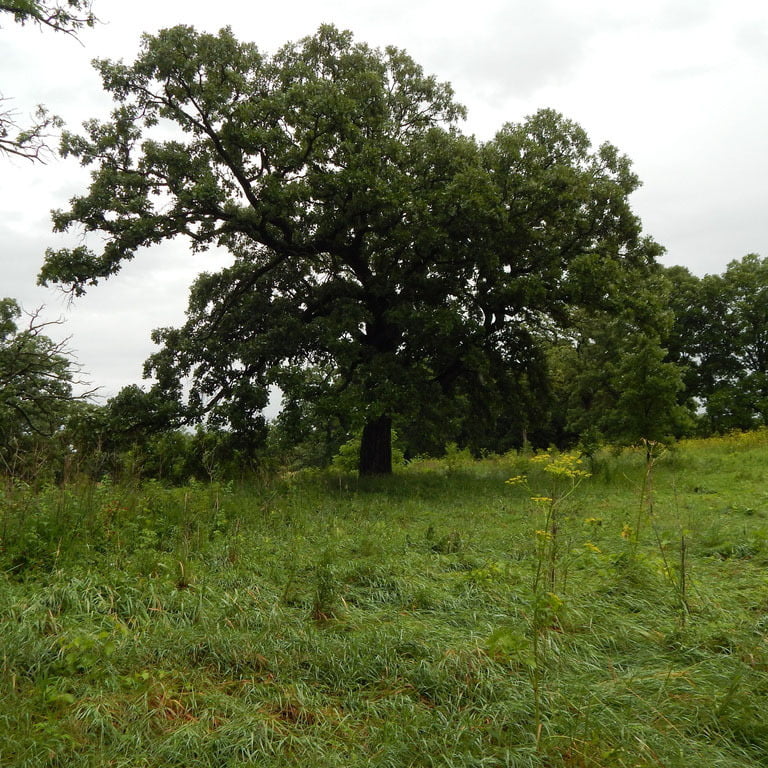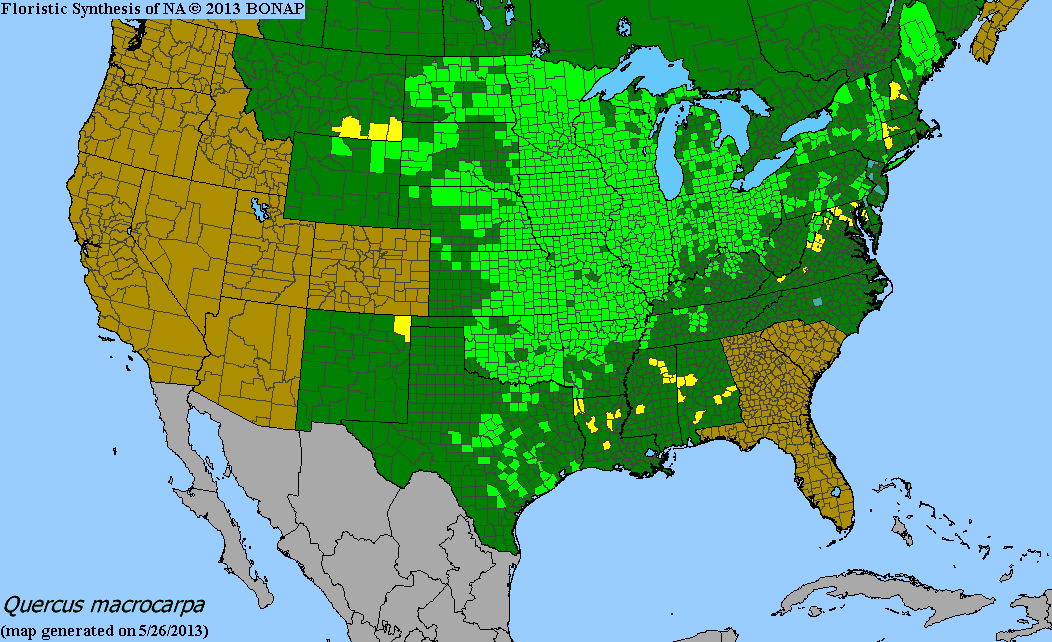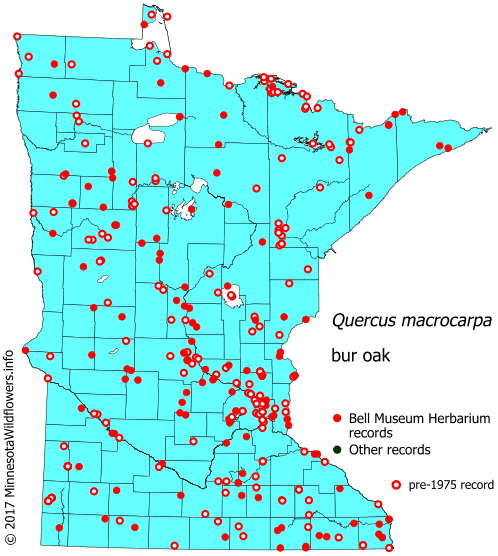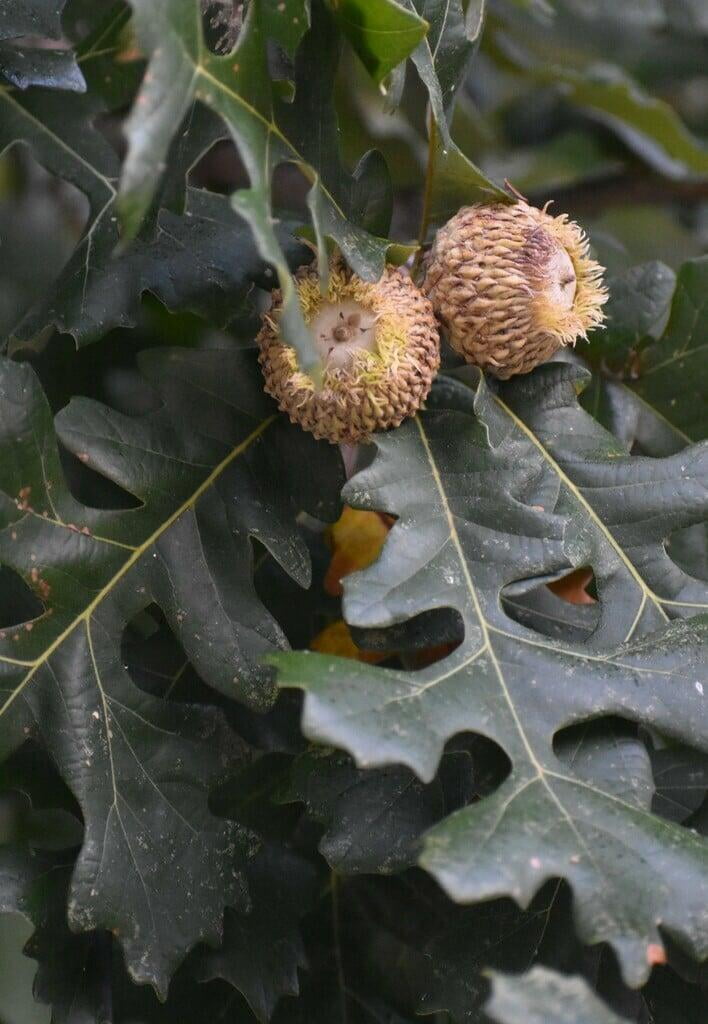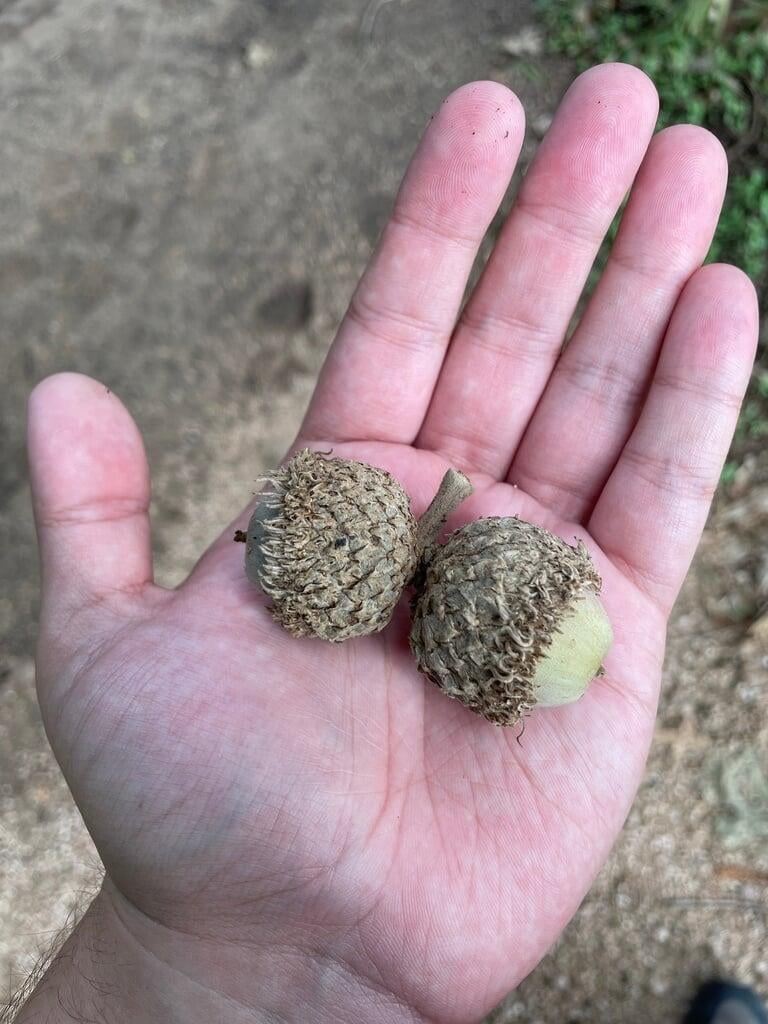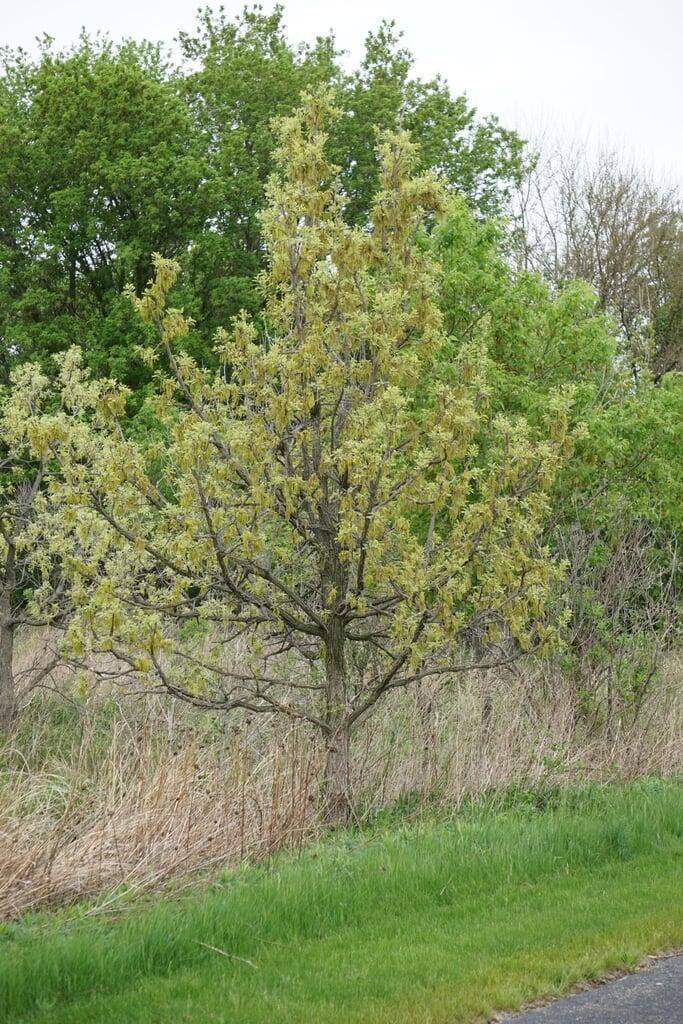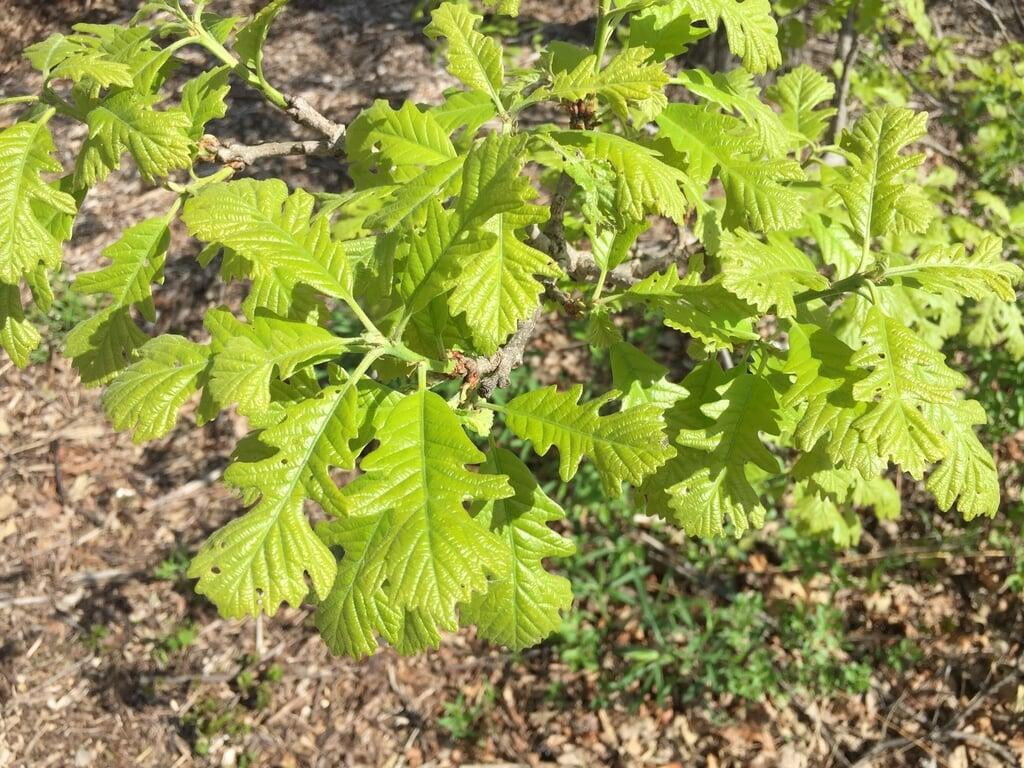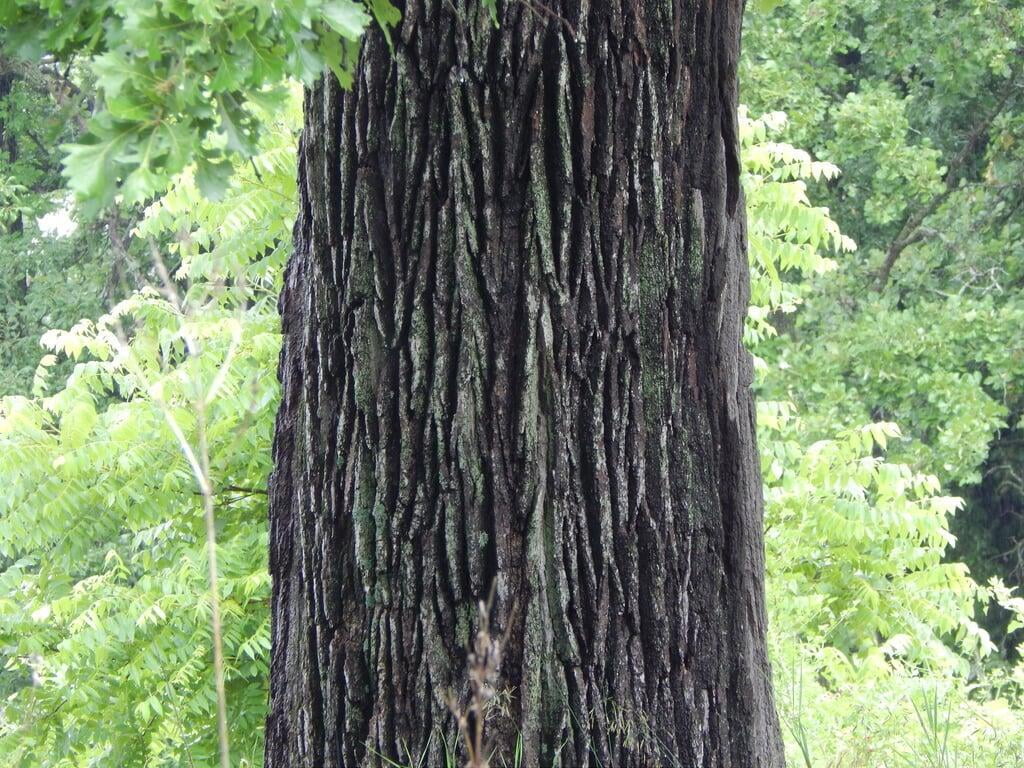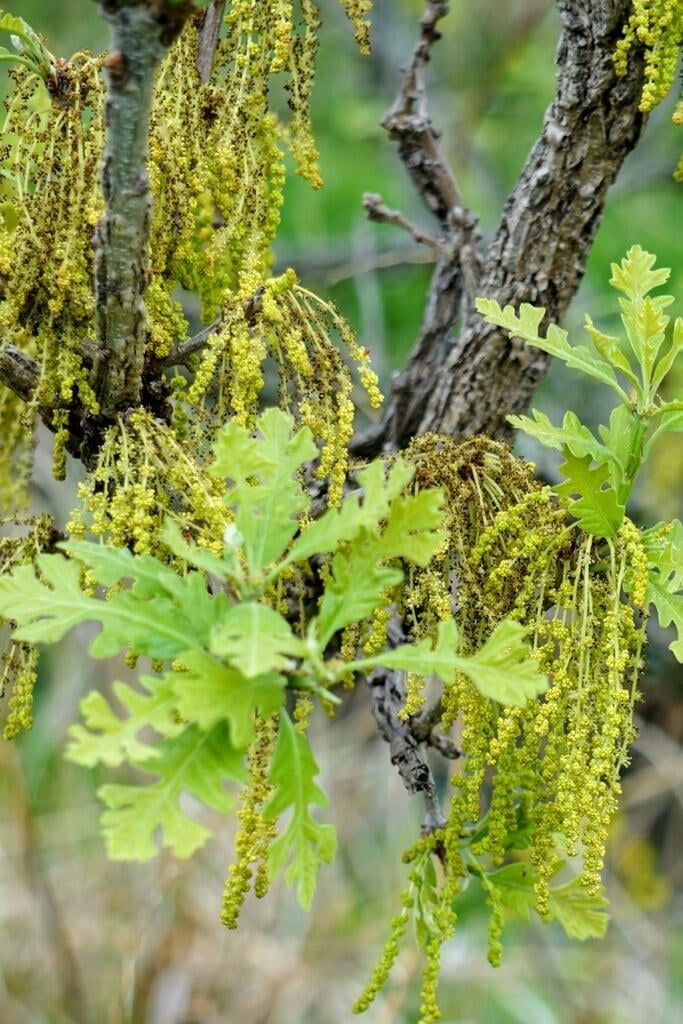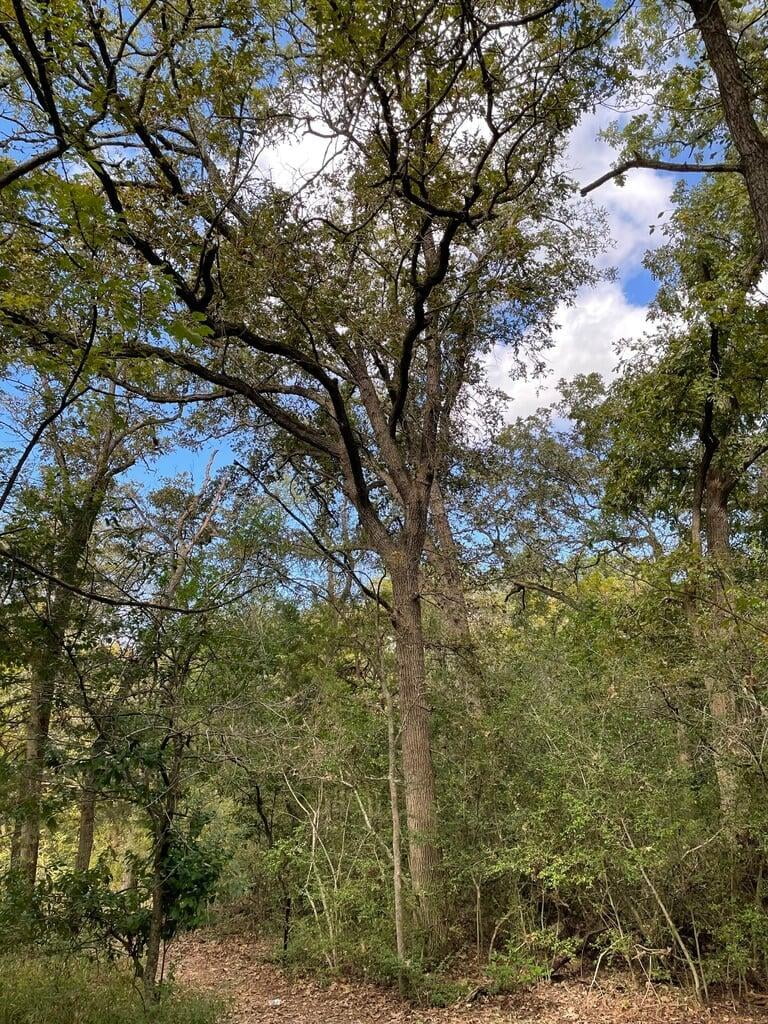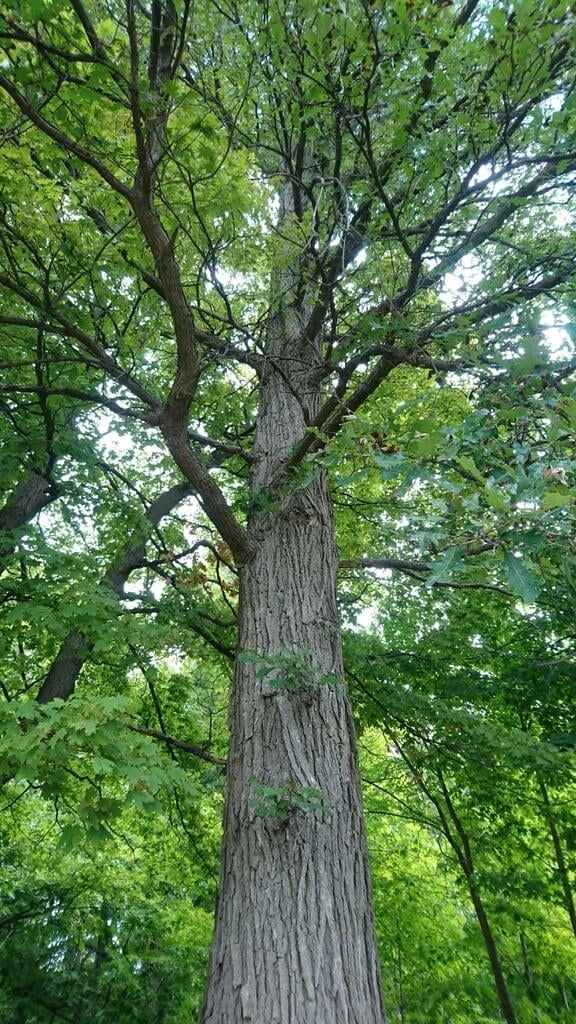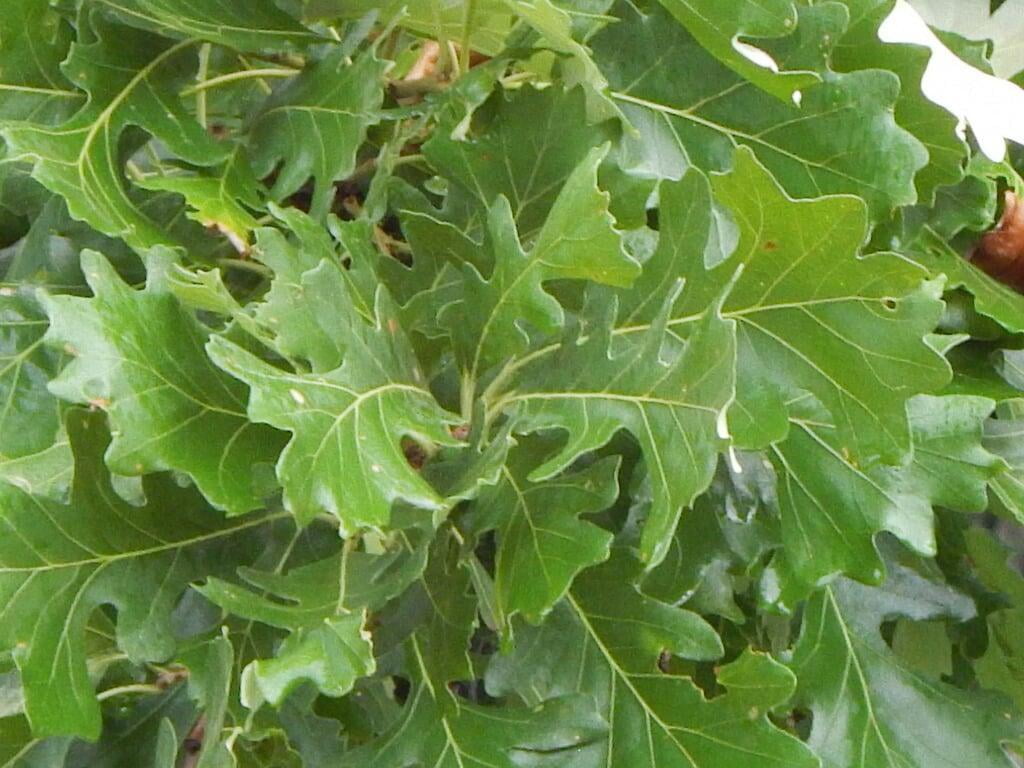Quercus Macrocarpa
Bur oak description:
Quercus Macrocarpa, commonly known as bur oak, is a large and majestic deciduous tree that is native to North America. At maturity, bur oak can reach up to 100 feet in height and 80 feet in width, with a broadly rounded to irregular crown. Its trunk can grow up to 3 feet in diameter, with deeply furrowed and ridged bark that gives the tree a rugged and distinctive appearance. The leaves of Quercus Macrocarpa are deeply lobed, up to 12 inches long, and have a shiny green upper surface and a pale green lower surface. In the fall, the leaves turn a rich yellow or brown color before dropping from the tree.
Quercus Macrocarpa is a valuable tree for its wood products and timber. Its wood is hard, strong, and resistant to decay, making it ideal for a variety of outdoor applications, such as fence posts, railroad ties, and landscaping structures. Bur oak also has a long lifespan, with some trees living for over 400 years. In addition, the tree provides important habitat and food for wildlife, including birds, squirrels, and deer. The acorns produced by Quercus Macrocarpa are a vital food source for many species, and can also be used to produce flour or fermented into a nutritious beverage.
Quercus Macrocarpa is a hardy and adaptable tree that can thrive in a variety of soil types and climatic conditions. It is drought-tolerant and can withstand periods of flooding, making it a valuable species for erosion control and stream bank stabilization. Bur oak is also an important tree for urban forestry, as it is tolerant of compacted soils and air pollution. Overall, Quercus Macrocarpa is a resilient and iconic tree species that provides many benefits to ecosystems and human communities alike.
Native Range:
The native range of Quercus macrocarpa, commonly known as bur oak, extends throughout much of the central and eastern United States. The species is found from central Texas northward to the Dakotas and eastward to the Appalachian Mountains. It is particularly common in the Great Plains region, where it is a dominant tree species in prairie habitats and river valleys. In some areas of its range, such as the Black Hills of South Dakota, bur oak grows in association with other oak species, while in others it is the only oak present. Bur oak can also be found in parts of Canada, including southern Manitoba, Ontario, and Quebec.
Standard Plant Information:
Plant Height: 100'
Bloom time: April - May
Preferred Habitat: Does well in full sun. Found many habitats from forests to prairie.
Planting:
Planting a tree seedling or small potted tree properly is important to ensure its healthy growth and development. Here are the steps you can follow to plant a tree:
Choose the right spot: Select a spot with adequate sunlight, water, and soil drainage. Make sure the tree has enough space to grow to its full size without interfering with other plants, structures, or utility lines.
Prepare the soil: Dig a hole that is twice as wide and slightly shallower than the root ball of the seedling. Remove weeds or debris from the area. Loosen the soil around the edges of the hole to help the roots grow more easily.
Plant the seedling: Place the seedling in the hole, making sure the top of the root ball is level with the ground surface. Gently spread out the roots and fill in the hole with soil, tamping it down lightly as you go.
Water the seedling: Water the tree deeply and thoroughly after planting, making sure the soil is evenly moist. This will help settle the soil around the roots and eliminate any air pockets.
Monitor the growth: Keep an eye on the seedling to make sure it is getting enough water and sunlight, and that it is not being attacked by pests or diseases. Prune any damaged or dead branches as necessary, and provide support if needed.
By following these steps, you can help ensure the healthy growth and development of your newly planted tree seedling.

